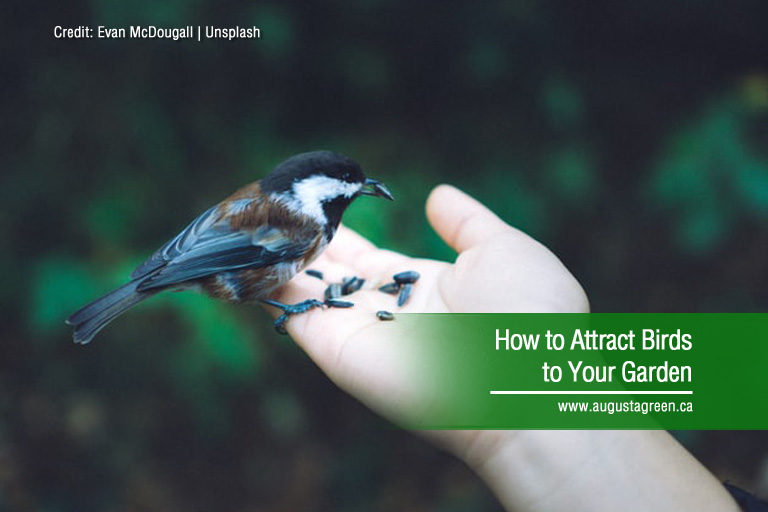There’s more to giving your yard a touchup than installing a new lawn sprinkler system. One inventive idea you can try is attracting birds to your home. Birds can offer various advantages to your landscape. They provide some colour to contrast your plants, offer soothing birdsong to start your day, control pest levels around the house, and pollinate the flowers in your garden.
If you’ve made up your mind to entice birds to visit your garden, the next question is how to get them to do so. The trick to making the yard a more welcoming environment is to offer basic necessities like ample food, water, and nesting space. Here’s a list of tips to help make your yard a safe, attractive haven for any nearby birds.
1.Set up bird feeders
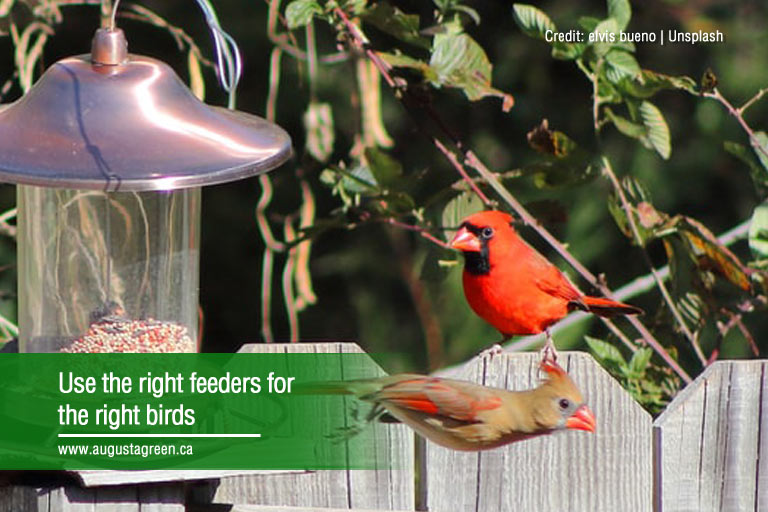
Birds require plenty of food. One of the most effective moves you can make is setting up bird feeders. There are a variety of feeders available to suit the needs of different species. Do your research on the best practices concerning bird feeding to ensure you’re using your bird feeders responsibly. Knowing what birds live in the area is a good start; it helps to know the local wildlife to determine which feeder is a good match. For example, finches and nuthatches favour cylindrical hanging feeders, while cardinals and blue jays gravitate toward ground feeders. If you do use multiple feeders, place them at different altitudes. Different species feed at different heights, so proper arrangement goes a long way toward attracting multiple types of birds.
When setting up your feeder, take care to place it in a safe space away from hedges, fences, trees, or sheds that predators could use to sneak up on the birds as they feed. However, some species like cardinals prefer having natural cover around when feeding. Set up your feeders in different areas of the garden to give those species the protection they crave.
Finally, birds can get territorial about feeders. Set them up at 1-metre intervals from each other to give your feathered friends ample space.
2.Source the right food
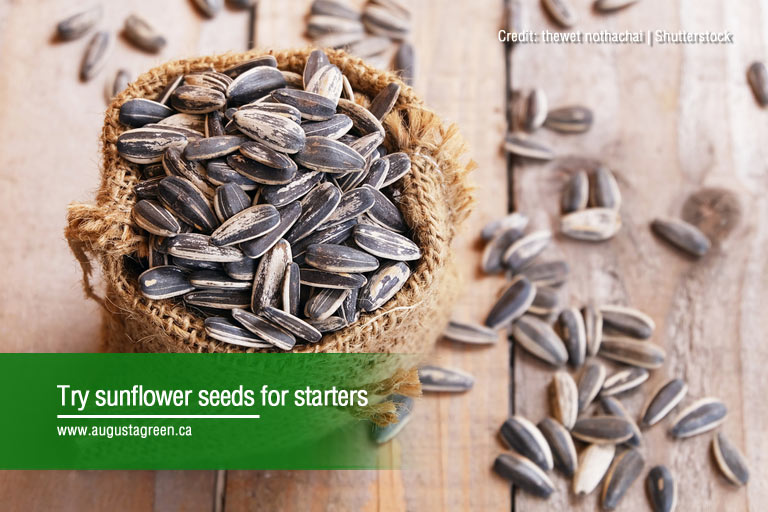
Different birds eat different foods, so providing a variety of foods is a great way of attracting multiple types to hang around your yard. Offering variety also helps the birds get adequate nutrition so they can stay healthy.
A common mistake many beginners make is buying low-quality food, like the kind available at most grocery stores. Instead, keep an eye out for quality bird feed that provides better nutritional value. Black oil sunflower seeds are a good place to start. These seeds are rich in fat, protein, and vitamins and minerals, making them a good choice for many songbirds. However, stock different kinds of feed as well to get the attention of other birds. Suet balls are a particularly good choice for birds that need high-energy food like woodpeckers, robins, and wrens. Peanuts are another option rich in protein and fat, and they’re a favourite with birds like finches and siskins.
Once the birds know you have a feeder, they’re extremely likely to come back regularly. To make sure they have reason to return, remember to keep the feeder topped up and clean. Birds tend to avoid dirty feeders, so keeping yours clean is a must. Cleaning is also a chance to remove any old, mouldy feed.
3.Provide plenty of water as well
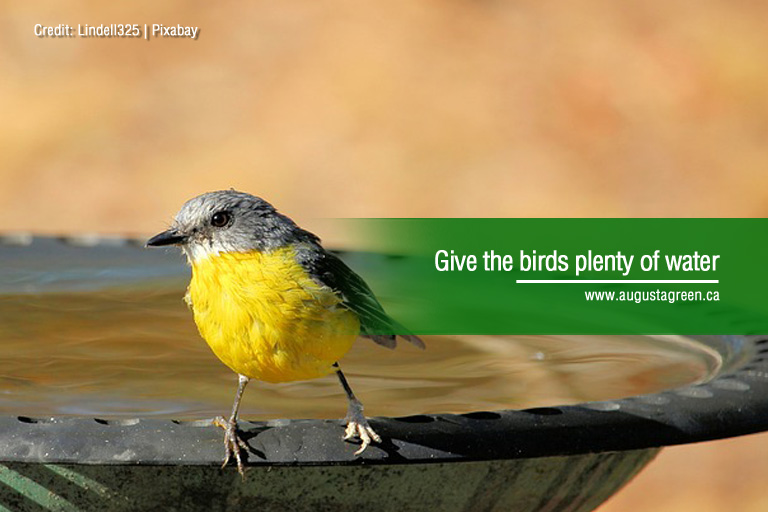
Birds also need plenty of water, for drinking and bathing. Consider installing a birdbath to give them more incentive to stick around your landscape. A birdbath can be as simple as a shallow bowl, but you can take it to the next level to make it more enticing. Consider a solar-powered birdbath that can pump water and keep the garden eco-friendly in the bargain.
The sound of moving water draws most birds. If resources permit, you can also go the extra mile with the birdbath by adding larger features like a waterfall or pond to attract even more species.
Take note that a single water source can attract more birds than it can handle. Consider setting up multiple water sources if your birdbath is doing a little too well. Having more than one birdbath also lets you create multiple environments like static or moving water to appeal to different species.
4.Set up some birdhouses
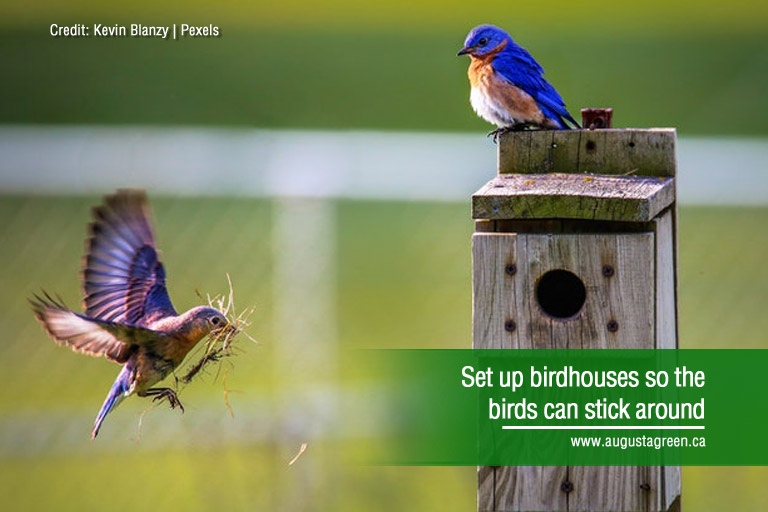
A shelter is another key factor in making a more bird-friendly garden. Add some birdhouses in sheltered areas of the garden, away from potential predators. Refrain from setting up a shelter in direct sunlight or somewhere prone to strong winds. Ideally, somewhere north- or east-facing works best.
If you’re building your own nestbox, keep in mind different birds have different needs. The classic small-holed nest box works well with a variety of small garden birds. Set these birdhouses within 2 to 4 metres up a tree or wall. Meanwhile, open-fronted nest boxes are a good match for robins or wrens. Place them low to the ground, with plenty of cover from shrubs and other plants. Finally, sparrow terraces are 3 nest boxes in one specifically designed for sparrows, as they breed in colonies. Place these shelters high, under the eaves of the roof.
5.Encourage them to nest
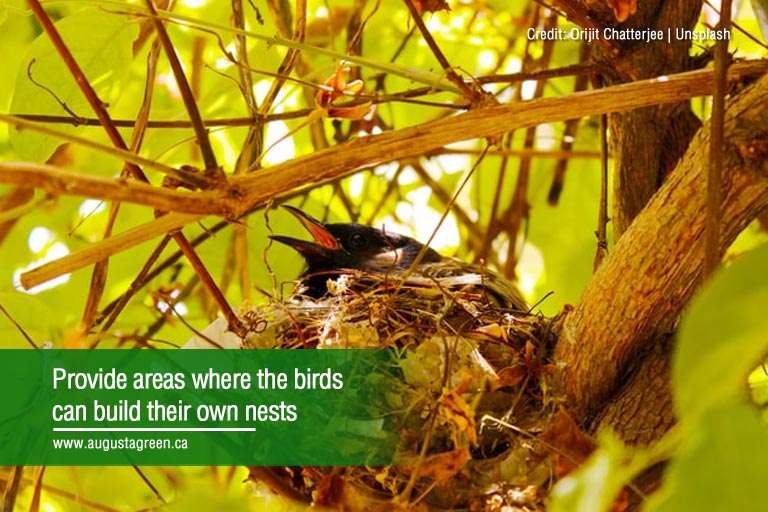
It is satisfying to see the birds using shelters you’ve made for them, but it’s all the more so when you see them create natural nests themselves. The simplest way to encourage birds to build their own homes is to plant trees and shrubs native to the area. Those plants are adapted to your local area, making it easier for them to take root once you’ve started planting. Local birds are also accustomed to those plants, which provide more ideal nesting sites when the birds start making themselves at home.
To improve your chances of attracting the right birds to your garden, consider planting a variety of plants to meet more of their needs. Thorny bushes like hawthorn or raspberry provide plenty of covered space where birds can build nests. Meanwhile, seed-producing plants can work as an additional food source, while evergreens and berry-producing shrubs can make a more bird-friendly landscape.
6.Install a perching stick
Other than creating some nesting space in the garden, birds also require a place to rest, preen, or take in their surroundings. If your yard has few trees or bushes where birds can alight, install a perching stick so the birds have a safe place to set themselves down.
Native trees and landscaping are ideal, but birds can make do on perching sticks. You can use a variety of materials to make a perch, but prioritize old branches to give the birds a more natural setup. When placing your perching stick, take care to place it a safe distance away from the feeders to deter predators.
One more advantage of setting up a perch is that it offers a convenient way of taking some nice shots of the birds whenever they come to roost. Set your stick up in a spot with good lighting and a favourable background to immortalize those moments when the birds settle down for a rest.
Keeping your garden healthy and inviting doesn’t have to be a difficult task. At Augusta Green Sprinklers, we are committed to providing landscape irrigation and lighting to help keep your yard in tip-top condition. Give us a call now at (416) 227-1666 to get a helping hand with your lawn.

